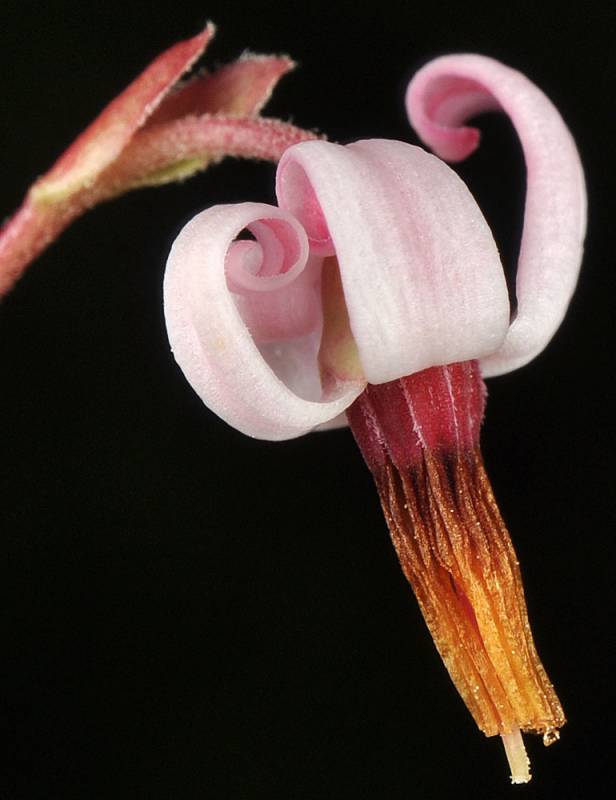Vaccinium cespitosum
Vaccinium macrocarpon
dwarf bilberry, dwarf huckleberry
cultivated cranberry, large cranberry
Leaves alternate, oblanceolate, 1-3 cm. long and + to as broad, with a wedge-shaped base, light green and glabrous above, paler and glandular below, serrulate from mid-length to the tips.
Leaves alternate, glaucous upper surface, green beneath, elliptic or narrowly elliptic, 5-15 mm long, margins entire and rolled slightly downward.
Flowers single in the axils, whitish to pink, 6-7 mm. long;
calyx obscurely 5-lobed;
corolla united, narrowly urn-shaped, twice as long as wide, the 5 lobes very short;
anthers with dorsal awns and apical, pore-bearing tubes;
ovary inferior.
Inflorescences emerging from axils of bracts at base of shoots from current year’s growth; pedicles bracteolate, 2-3 cm, slender, nodding;
bracteoles 2, 1-2 mm wide, resembling scales, greenish white;
calyx lobes small;
corolla white to pink, very deeply 4-lobed, segments 6-10 mm, strongly reflexed;
filaments hairy, 1/3 length of anthers, anthers 1-2 mm.
Fruit a berry, glaucous-blue, globose, 5-8 mm. broad.
Berries globose, smooth, reddish to pink, 10-15 mm.
Vaccinium cespitosum
Vaccinium macrocarpon
- Local floras:
CA,
OR,
WA
- Local Web sites:
CalFlora,
CalPhotos,
Flora NW,
PNW Herbaria
WildflowerSearch
iNaturalist (observations)
USDA Plants Database
- LBJ Wildflower Center
- SEINet
- Plants of the World Online
- Encyclopedia of Life
- Wikipedia
- Google Image Search
- Local floras:
BC,
CA,
OR,
WA
- Local Web sites:
CalFlora,
CalPhotos,
Flora NW,
PNW Herbaria
WildflowerSearch
iNaturalist (observations)
USDA Plants Database
- LBJ Wildflower Center
- SEINet
- Plants of the World Online
- Encyclopedia of Life
- Wikipedia
- Google Image Search



